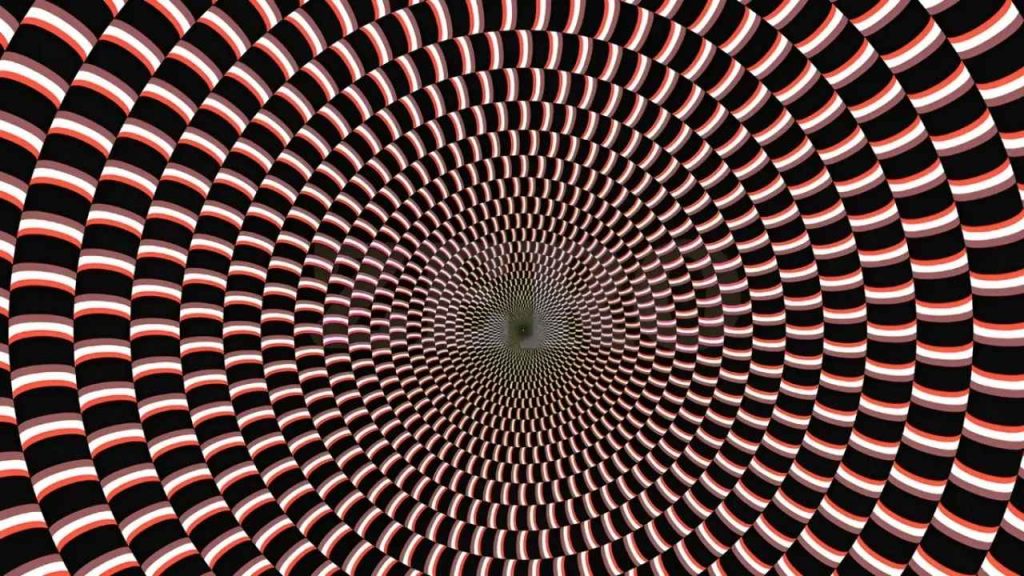Our minds are brilliant at interpreting the world around us, yet they can be fooled with surprising ease. One of the most captivating ways to experience this is through 3D optical illusions images that bend our sense of reality. At first glance, these illusions seem abstract or chaotic, but hidden within their design lies a carefully concealed word, waiting to be discovered by those with sharp perception and patience.
How 3D Illusions Trick Your Brain
3D illusions manipulate the way our eyes perceive depth and contrast. Human vision constantly seeks order, so the brain tries to turn flat visuals into realistic depth cues. In this illusion, layered colors and subtle shadows create a deceptive sense of dimension. Your brain works overtime to make sense of what it sees, leading to confusion between what’s actually there and what it imagines.

Why Only a Few People Spot It Instantly
Many people glance at the image and see nothing special. That’s because the human mind tends to ignore what it can’t decode right away. The hidden word requires more than just a quick look it demands focus, calmness, and persistence. Those who eventually uncover it often share common traits: patience, pattern awareness, and strong attention to visual details.
Training Your Eyes and Mind
You can sharpen your ability to recognize such illusions with a few simple techniques. Start by letting your eyes relax rather than staring hard. Try to look “through” the picture instead of directly at it similar to how people view stereogram puzzles. This helps your brain shift its focus, filtering out unnecessary details until the hidden image appears. With practice, your visual intelligence becomes faster and more flexible.
What This Challenge Says About You
Your reaction to this illusion reflects how you approach problem-solving in general. Some give up quickly when results aren’t immediate, while others experiment with angles, distance, and lighting until they find clarity. Those who persevere tend to be adaptive thinkers who enjoy solving complex problems skills that extend beyond puzzles into everyday decisions.
The Science Behind Hidden Images
Optical illusions take advantage of how the brain processes information. Instead of analyzing each visual detail separately, our minds use experience and expectation to interpret what we see. When the hidden word doesn’t match these expectations, it becomes invisible to the conscious mind. The moment you finally recognize it, your brain experiences a rush of satisfaction, similar to solving a riddle.
How Vision Affects Illusion Perception
Visual clarity does influence how quickly you can detect the word, but it’s not just about perfect eyesight. People with slightly different visual habits such as those who focus differently or take more time can sometimes outperform others. It’s a mix of vision, patience, and cognitive strategy that determines who spots it first.
The Craft of Concealed Design
Artists who design these illusions combine creativity and psychology. They play with color gradients, typography, and negative space so the secret element blends perfectly with its background. The balance between visibility and invisibility is intentional it challenges the observer to think beyond the obvious and trust their instincts rather than their first impression.
Why These Illusions Go Viral
Online audiences love visual challenges because they trigger curiosity and competition. People share them to test friends and prove their perceptual skills. Debates over what’s hidden inside these images often fill comment sections, sparking engagement and friendly rivalry. It’s a perfect mix of entertainment and mental stimulation that keeps viewers hooked.
Why the Brain Enjoys the Hunt
Whenever you finally identify the hidden word, your brain releases dopamine the same chemical responsible for feelings of reward and pleasure. This instant gratification motivates you to seek out more puzzles and challenges. Solving illusions not only entertains but also strengthens focus, attention span, and cognitive agility.
Simple Habits to Sharpen Perception
To enhance your ability to decode hidden images, practice mindfulness to reduce distractions, try solving daily puzzles, and expose yourself to a wide variety of visual art styles. Each activity helps your mind process complex information faster and see beyond surface-level patterns.
When the Hidden Word Appears
The moment the concealed word finally pops into view is pure satisfaction. What once seemed random suddenly makes perfect sense. It’s a reminder that perception can shift in an instant and that sometimes, truth hides behind what we assume to be real.
Table: Tips to Improve Your Visual Recognition Skills
| Technique | Description | Benefit |
|---|---|---|
| Relaxed Focus | Look through the image rather than directly at it | Helps reveal depth-based illusions |
| Mindful Observation | Take time to explore patterns calmly | Improves patience and visual stamina |
| Lighting Adjustment | Change the brightness or screen angle | Highlights hidden contrast variations |
| Regular Brain Training | Engage in puzzles, mazes, or pattern games | Strengthens cognitive flexibility |
| Artistic Exposure | Study abstract or surreal art forms | Expands your perception of shapes and space |
Reflecting on the Illusion Experience
In an era where everything demands instant attention, a 3D illusion like this encourages stillness and focus. Whether you deciphered the hidden word right away or are still searching for it, the exercise itself sharpens your awareness. It’s a playful reminder that what we perceive isn’t always reality and sometimes, clarity comes only when we choose to look a little deeper.



